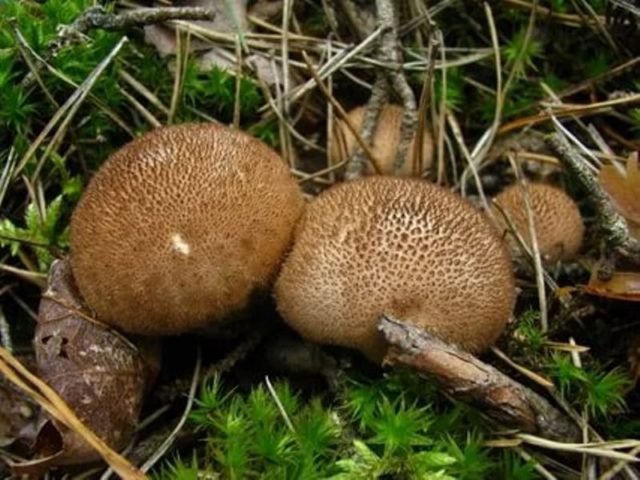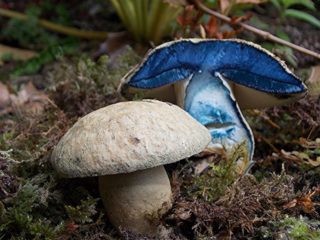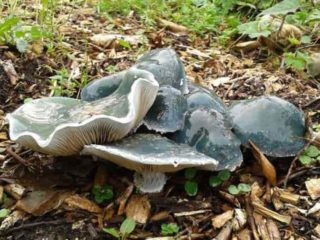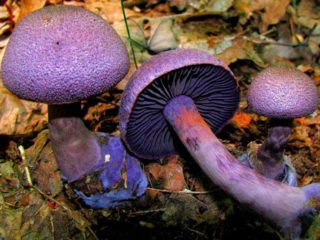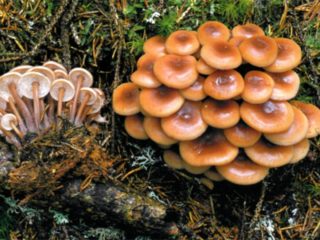Content
The baggy golovach is an edible representative of the Champignon family. The species is found infrequently, grows in single specimens at the edge of the forest, fields, meadows and pastures. Since the mushroom has similar twins, you must carefully read the description, view photos and videos.
What does a baggy bighead look like?
The fruit body reaches a diameter of 15-20 cm. The warty surface is fine-grained, painted in a whitish color, with age, the color changes to gray-brown. As it grows, the rounded fruiting body cracks and the upper part collapses. From there, pulp falls out with spores, which scatter in the wind and give life to a new mushroom generation.
In young specimens, the flesh is snow-white, with a pleasant mushroom taste and aroma. Then it turns brown or olive-brown and takes on an unpleasant odor.
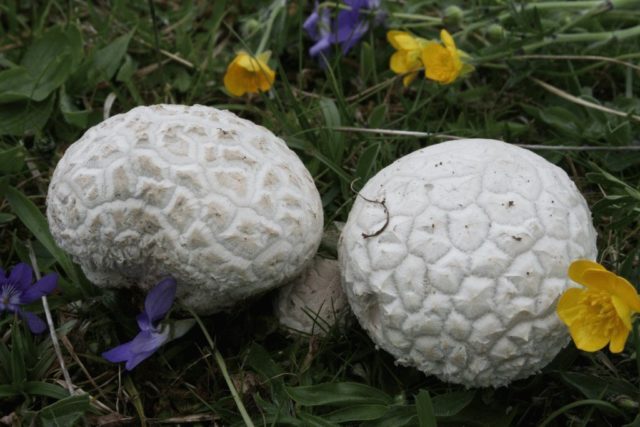
You can recognize the view by the lumpy surface
Where and how it grows
The baggy head prefers to grow in open, sunny places. It can be found in fields and meadows, along roads, in city parks and squares. Distributed throughout Russia, bears fruit throughout the warm period.
Is the mushroom edible or not
The mushroom belongs to the 4th group of edibility. In cooking, only young specimens with white flesh are used. The mushroom is valuable among cooks, as it contains carbohydrates, a large amount of protein, micro- and macroelements, vitamins.
Before cooking, the mushrooms are washed, peeled and boiled. It can then be used to make soups, fried and stews.
Old specimens are not eaten, as they, like a sponge, absorb toxins and can harm the body.
The healing properties of baggy bigheads
Due to the rich mineral and fortified composition, the baggy bighead is widely used in medicine. One of the main medicinal properties is antibacterial action. On its basis, drugs are made against salmonella, streptococci and staphylococci.
In folk medicine, baggy bighead is used to eliminate the following ailments:
- improves vision;
- strengthens the heart muscle;
- enhances immunity;
- improves the functioning of the digestive system;
- improves the condition of teeth, bones and joints.
Despite the fact that the baggy bighead benefits the body, it also has contraindications.In large quantities, it is not recommended to use it for hypertensive patients, people with pancreatitis, peptic ulcer disease and exacerbated gastritis.
Since the mushroom is a heavy food, it is necessary to refrain from it for children under 8 years old and not eat it 2-3 hours before bedtime.
Doubles and their differences
The baggy golovach, like any forest dweller, has similar twins. Such as:
- Blackberry-prickly raincoat - an edible species that grows in small families in deciduous forests. The hemispherical fruit body is covered with closely growing thorns. The pulp is dense, whitish, with age it becomes dark brown. In cooking, only young specimens are used.
A rare species that resembles a hedgehog
- Smelly raincoat - an inedible specimen. The brown fruit body is covered with curved thorns and reaches a height of 5 cm. Mushrooms grow in coniferous and deciduous forests, forming star-shaped clusters. The smell is unpleasant, repulsive. Fruiting from May to October. When eaten, the mushroom causes food poisoning.
The species causes poisoning when eaten.
Conclusion
Baggy golovach - belongs to the 4th group of edibility. Due to its beneficial properties, this representative of the mushroom kingdom has found wide application in cooking and folk medicine. But since the species has contraindications, it is necessary to consult a doctor before use.

